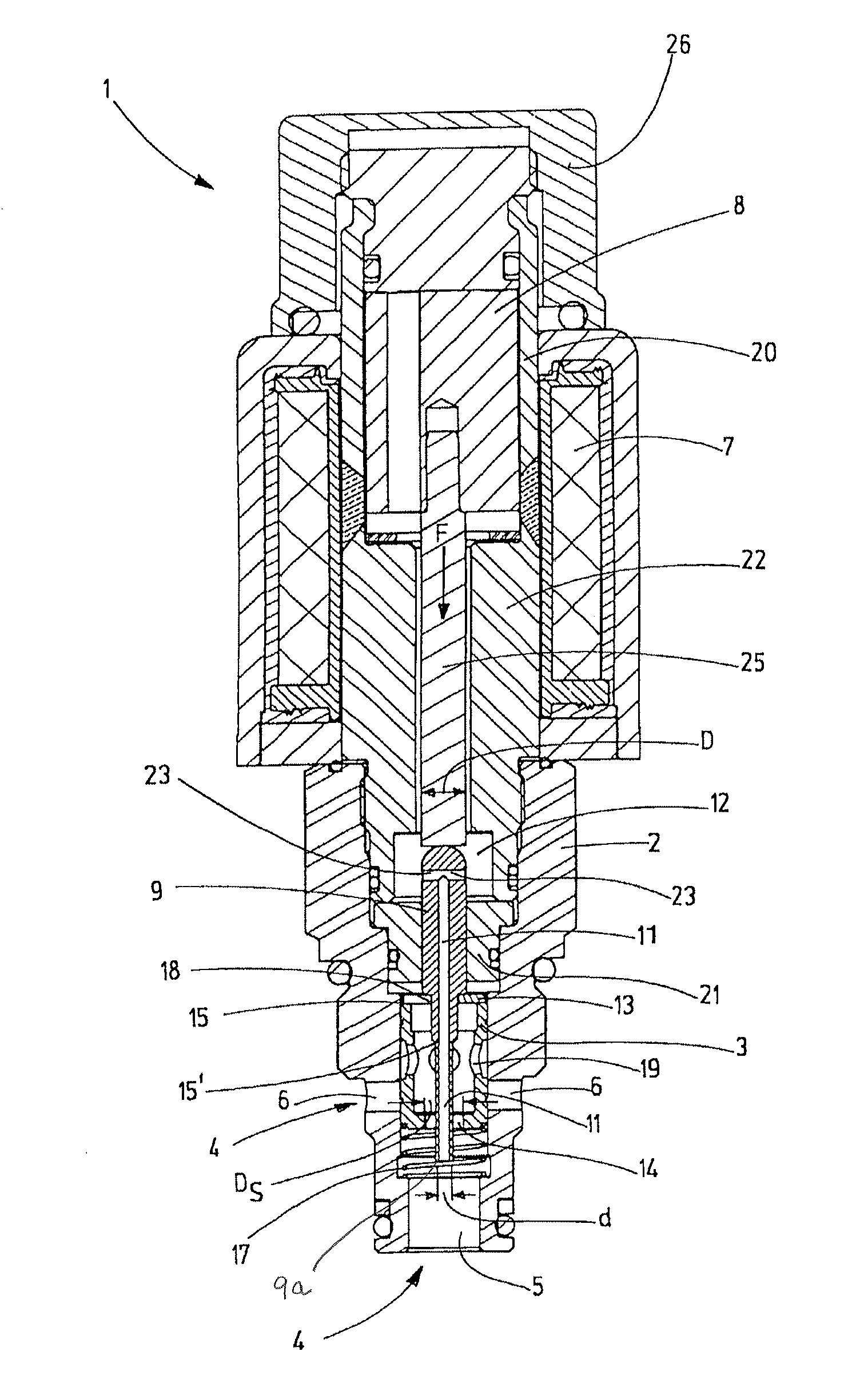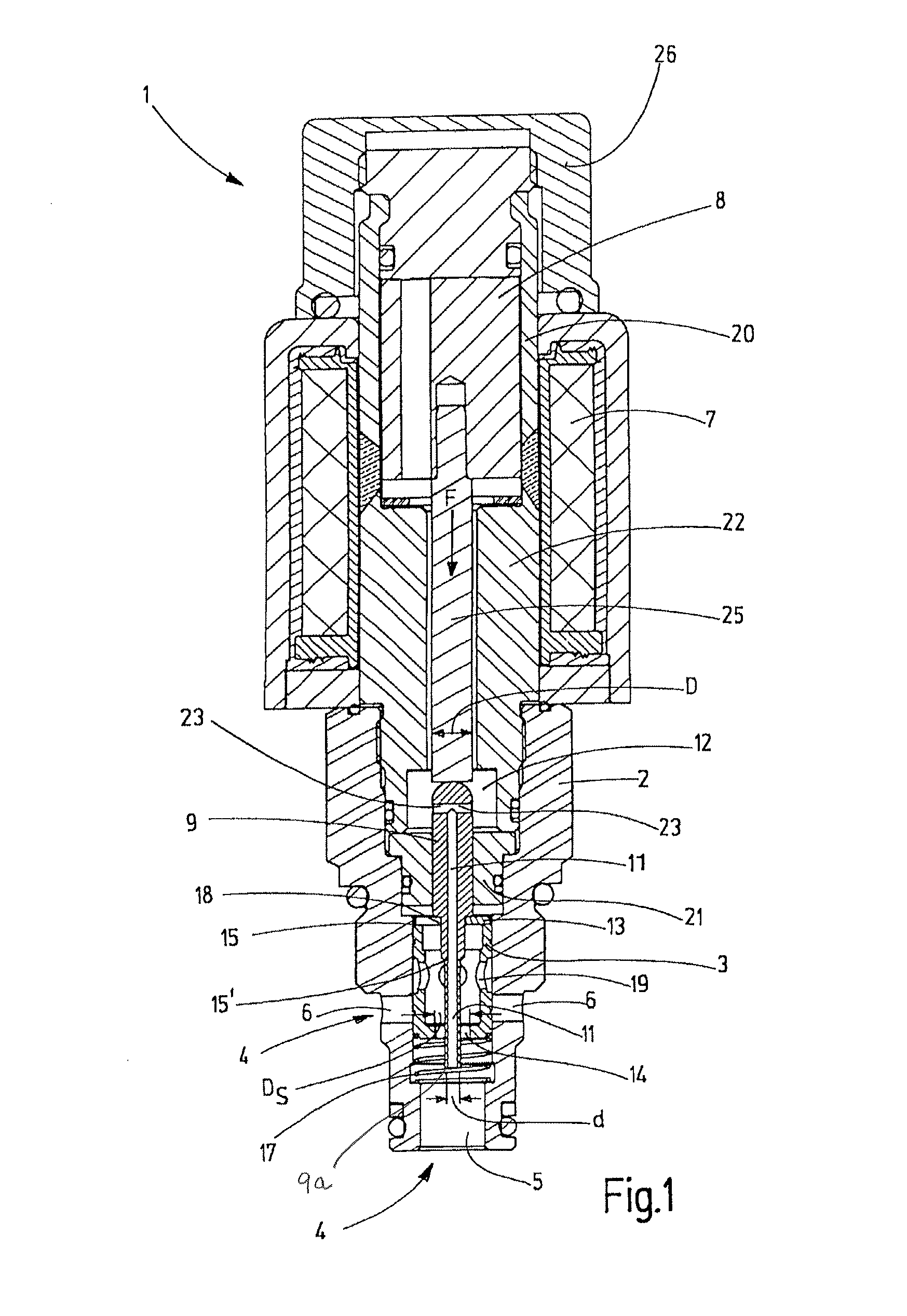Flow control valve
a flow control and valve device technology, applied in the direction of fluid pressure control, pressure relieving devices on sealing faces, instruments, etc., can solve the problems of large volume flow control, high energy demand, and large volume of the valve device, and achieve precise volume flow control, small overall size, and minimize energy demand
- Summary
- Abstract
- Description
- Claims
- Application Information
AI Technical Summary
Benefits of technology
Problems solved by technology
Method used
Image
Examples
Embodiment Construction
[0027]FIG. 1 is a longitudinal sectional view of an electromagnetic 2-way proportional flow control valve 1 capable of holding a hydraulic fluid volume flow from a hydraulic fluid pump (not illustrated) to a hydraulically connected consumer (not illustrated) more or less constant, independently of any pressure fluctuations that might occur. The electromagnetic 2-way flow control valve 1 can control the volume flow on the influent flow side or the return side of the hydraulic consumer (not illustrated), for example, in the form of a working cylinder of a construction machine or the like.
[0028]The valve, hereinafter referred to only as the flow control valve 1, has a valve housing 2 configured as a screw-in cartridge solution. The lower, axial end of the valve housing 2 has a central fluid inlet 5 and several radial outflow openings or outlet 6, of which two are shown in the longitudinal sectional view. A sleeve shaped control piston 3, designed as a sliding piston, is guided such tha...
PUM
 Login to View More
Login to View More Abstract
Description
Claims
Application Information
 Login to View More
Login to View More - R&D
- Intellectual Property
- Life Sciences
- Materials
- Tech Scout
- Unparalleled Data Quality
- Higher Quality Content
- 60% Fewer Hallucinations
Browse by: Latest US Patents, China's latest patents, Technical Efficacy Thesaurus, Application Domain, Technology Topic, Popular Technical Reports.
© 2025 PatSnap. All rights reserved.Legal|Privacy policy|Modern Slavery Act Transparency Statement|Sitemap|About US| Contact US: help@patsnap.com



